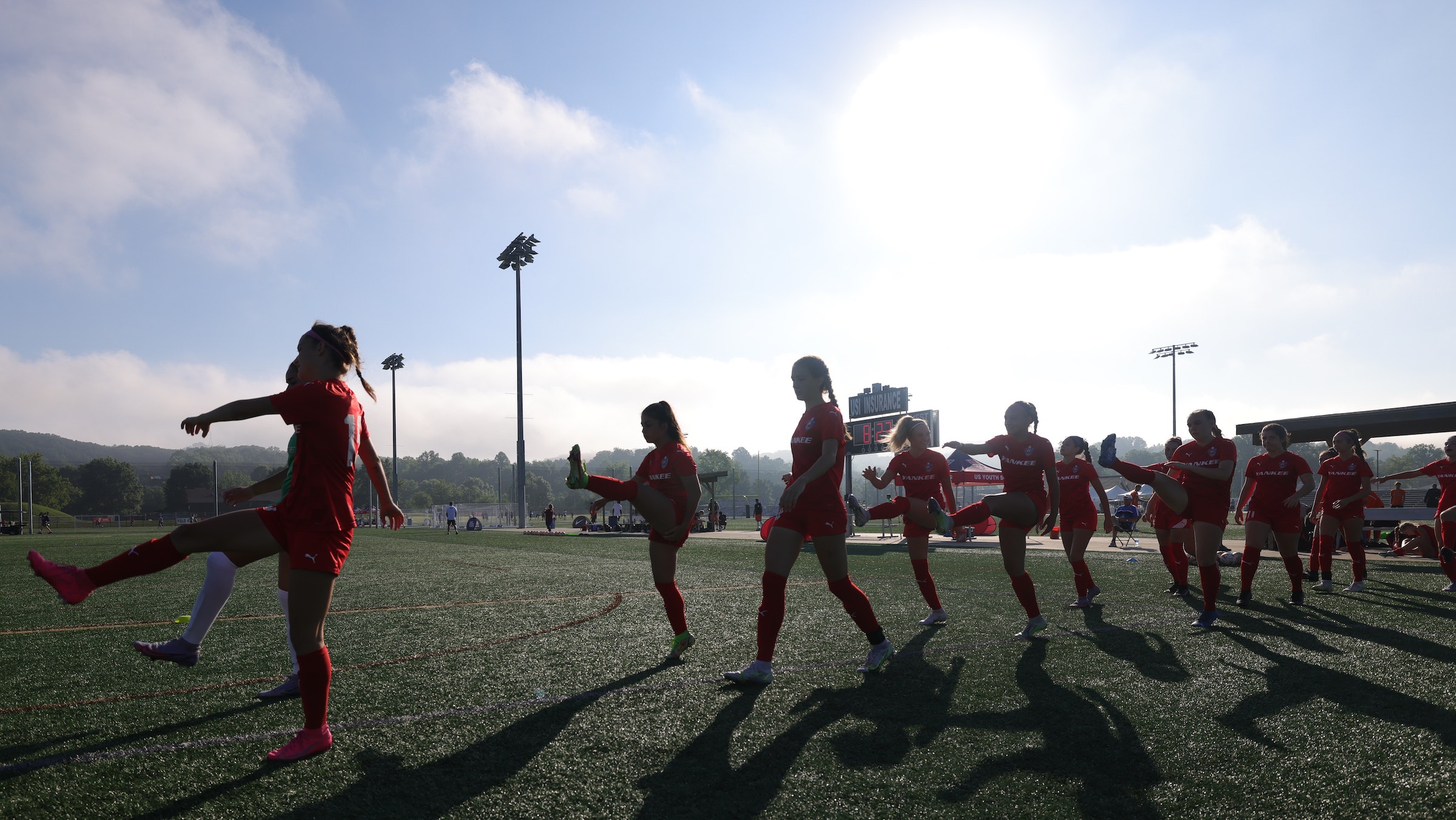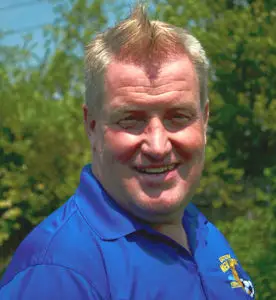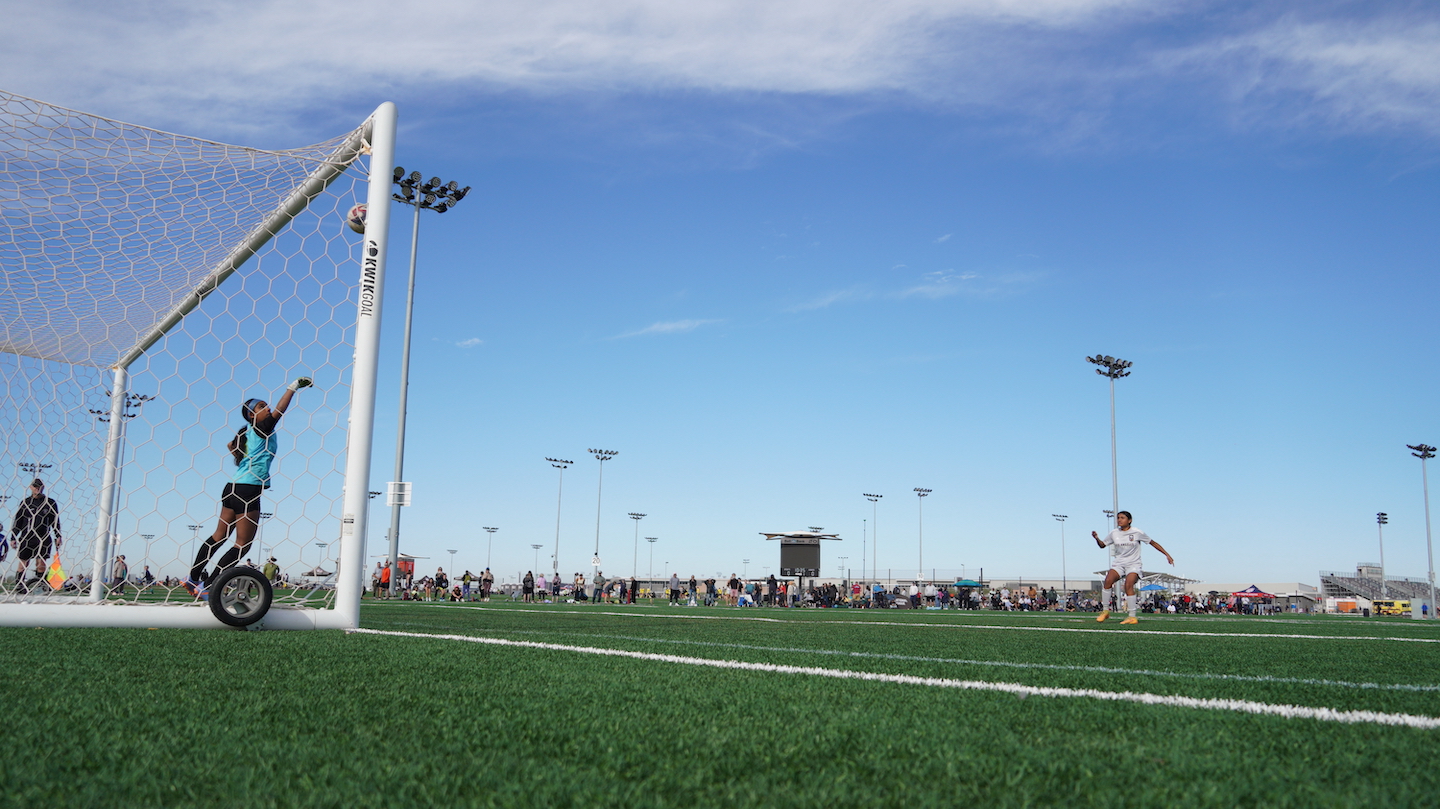Originally published on EricaSuter.com
Follow Erica Suter: Twitter | Instagram
Order ‘The Strong Female Athlete‘ Book on Amazon
I went to the emergency room in 2018.
I had insomnia, two faint spells in a week, and chest tightness that lasted for days. From the outside, I was a healthy woman in her 20s. I strength trained and nourished my body. I spent time outside. I went for walks. I stayed hydrated. What could possibly have been wrong?
Everything in my routine was dialed in, but it proved worthless when I looked at my stress levels. The truth was, I was burned out from my career and had no days off for an entire year. I plowed through 7 days a week of work. I coached Monday through Friday until 9pm at night. I wrote blogs, blasted out content, and also did a few training sessions on the weekends. I had no time for recovery. For a while, I could handle the grind…until I reached a breaking point.
The law of diminishing returns slapped me across the face. I realized that high performers must get rest. Otherwise, output suffers.
The World’s Highest Performers
The top CEOs and most successful entrepreneurs don’t grind year-round.
A friend of mine, who mentors multi-millionaire CEOs of the top companies in the world said that they rest. A lot. They wouldn’t be successful if they didn’t.
According to research conducted at IMD, more than 1,000 executives from around the world said that rest was required for quality output, and they were successful when they did less, not more. They worked smarter, not harder.
 If CEOs are constantly stimulated, on the go, and busy, they can’t think logically because they’re too scatter brained. These positions require high level decision making and strategy. They require multi-million dollar deals that are make or break. It’s survival of the fittest…and most rested. What’s more is, these guys wear health tracking devices so they can monitor their recovery – heart rate, HRV, and sleep. They’re as diligent in their performance as professional athletes.
If CEOs are constantly stimulated, on the go, and busy, they can’t think logically because they’re too scatter brained. These positions require high level decision making and strategy. They require multi-million dollar deals that are make or break. It’s survival of the fittest…and most rested. What’s more is, these guys wear health tracking devices so they can monitor their recovery – heart rate, HRV, and sleep. They’re as diligent in their performance as professional athletes.
Speaking of pro athletes, they also have recovery days, as well as an extended off season to be with family, rest, and prepare in the weight room for the demands of the next preseason. They have time to rejuvenate, then build back up again in a progressive, safe manner.
Kids Aren’t Mini Adults
Youth athletes are doing the opposite of the world’s highest performers. They’re working harder than adults and professional athletes. They’re required to be on over 10 months in the year.
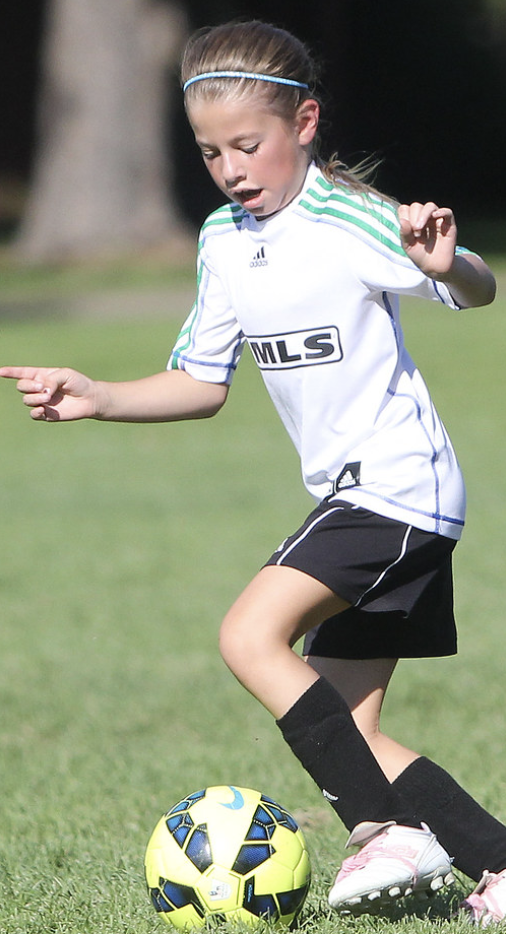
I once had a dad joke with me that his 8-year-old had a busier schedule than him.
I’ve also heard the line, “but kids are resilient!”
I mean, yes, kids are physically malleable to learn new motor patterns, improve coordination, body awareness, balance, and strength, but at the same time, they’re physically precarious.
Growth spurts are a thing. Most kids don’t reach full adult stature until ages 15-17. Just like CEOs and pro athletes, kids’ training loads need meticulous attention, too.
Growth spurts are a thing. Most kids don’t reach full adult stature until ages 15-17. Their training loads need careful attention, too.CLICK TO TWEET
Strength Helps…Sometimes
I’ll always be the biggest advocate for strength training.
It makes the bones strong. It improves joint stiffness. It builds muscle.
It makes athletes resilient to the forces in sports.
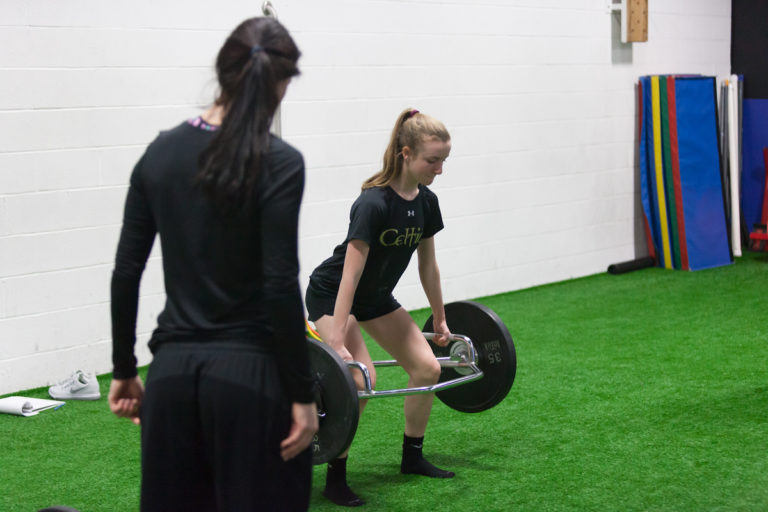
Strength training does provide a buffer to keep the athlete durable to handle sport specific load, but I caution parents with this: it’s not 100% guaranteed your athlete who strength trains, while playing on multiple teams in a season, will make it out unscathed.
Here’s a simple equation: when sport load > tissue tolerance = high injury risk.
This equation sums up the average schedule of a multiple-team-in-a-single-season-athlete today:
Monday: school practice
Tuesday: school game + club practice
Wednesday: club practice
Thursday: school game + club practice
Friday: skills training
Saturday: club game
Sunday: hopefully off LOL but I have seen parents schedule skills training
Replace “school practice” with another sport, and the concerns are the same. It’s frightening to look at the hours spent in sport specific movement to the hours spent strength training. On average, kids are in over 10 hours in organized sport a week, to one meager hour of strength training, or maybe not even at all.
Most terrifying of all about this isn’t just the ratio from sport to strength training, it’s the dreadful lack of recovery and true off days. Yes, that’s plural. Off days. Not one, but two full days to be a kid, hang with friends at the local smoothie cafe, go to the mall, and enjoy the outdoors. No obligations. No organized competition. Free play. Just childhood.
Building muscle requires recovery.
Building muscle requires adequate recovery – CLICK TO TWEET
It begs the question: how much benefit are multi-team athletes in a single season getting from strength training? If recovery is required to make strength gains, does the strength training become useless?
My recommendation is something has to give in the schedule.
Can you cut back on skills training so a kid has a Friday and Sunday fully off? Can they just focus on one team, not two, so they can get the best strength adaptation from their training sessions?
Remember, appropriate buckets in youth athletic development need to be filled equally: technical, tactical, and physical. Skills trainers aren’t totally necessary in-season if they take away from recovery days because they’re just adding more fuel to the overuse fire. They’re only keeping the muscles in a catabolic, not anabolic state. More breakdown, not enough build up.
Muscles require a new stimulus from resistance to grow, namely, in the gym. The same, repetitive movements in skills sessions, that have carryover to what’s already being done at practice, only provide more wear and tear on the muscles, bones and joints. There’s no progressive overload for the body to truly become strong. Pair with with the epidemic of malnourishment and lack of protein in kids, and it’s even worse.
Strength training must have an equal ratio to sport specific load, with rest days sprinkled in. And yes, it’s okay to strength train before a practice in season so other days are fully off.
In season strength training is supposed to excite the nervous system, not exhaust (for more in season programming, GO HERE).
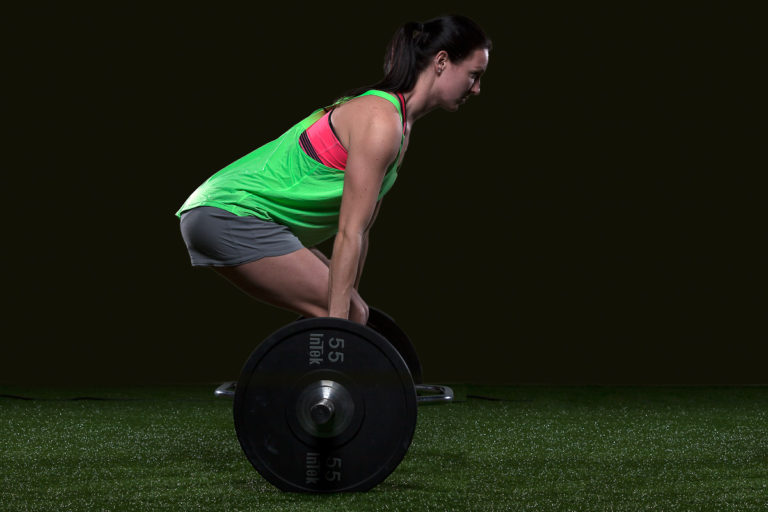
Anecdotal Evidence
So yes, strength training helps, but with multiple teams in a season is when things get sketchy.
I’ve seen this manifest right before eyes with athletes who did strength train in season, but who still weren’t completely safe from the multi-team nonsense.
Very few had a single day off for muscle tissue to recover, and be able to build up again during strength sessions.
The results from several athletes are in:
Lacrosse and soccer – athlete with 12 stress fractures in foot
Lacrosse and soccer – athlete with knee tendinitis
Soccer and basketball – athlete with hamstring strain and over a year in rehab
Soccer and basketball – athlete with knee tendinitis that turned into patellar reconstructive surgery
Soccer and cross country – athlete with knee tendinitis
School and club soccer – hip flexor strain
School and club soccer – hip fracture
Field hockey and soccer – Osgood-Schlatter
Field hockey and indoor lacrosse – Osgood-Schlatter
Of course, there are cases when multi-team athletes do make it out alive and that’s when I look at the sky and shout, “praise the Lord!”
But based on the science and anecdotal evidence, the gamble isn’t worth it. Every time an athlete tells me they’re playing for two teams in a season, my blood pressure rises to astronomical levels.
Every time an athlete tells me they’re playing for two teams in a season, my blood pressure rises to astronomical levels.CLICK TO TWEET
Even if they’re playing a “different” sport, i.e. lacrosse and soccer, or field hockey and basketball, it’s the same movements – cutting, jumping, sprinting, jogging, and changing direction. Quadricep and hip flexor heavy, no doubt.
Soccer is better paired with something totally different. Golf. Underwater basket weaving. Curling. Snowboarding. An unstructured hobby like rock climbing, or badminton with dad in the backyard.
Do something that isn’t overusing the same muscles and providing impact on the same joints. Also, do something that isn’t an organized team practice. Do something that has play and spontaneity.
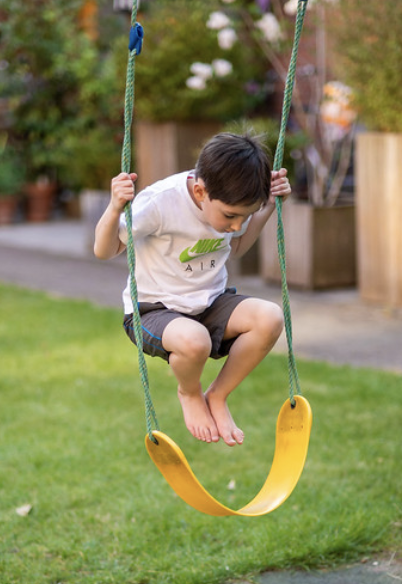
What Did You Think Would Happen?
It breaks my heart when I speak my peace and discuss the importance of load management and recovery.
It hurts even more when I explain the literature (and anecdotal evidence from over a decade of coaching), and people still don’t listen. For those shouting, “show me the science!” you can find endless peer-reviewed research on overuse in my book The Strong Female Athlete.

It cuts even deeper when parents come back to me after not listening, and there’s an injured and devastated athlete on their hands.
Did you really think it was a good idea for a maturing kid with open growth plates, bone mineral density not ossified yet, adult stature not grown into either, to run them into the ground year-round with no off season and time for physical preparation? Did you really think it would end well to bolt from one team practice to the next, then to a Friday skills session, to Saturday game, to another Sunday skills session, and for them to come home to homework, too? Did you really think it would work in their favor for them to do this several days a week with no rest while the quadriceps muscle is pulling on the knee tendon during growth?
How would you feel if you pushed this hard with your job the entire year?
What did you think would happen?
“But She Loves It!”
I don’t care. This shouldn’t be a reason to justify enrolling a child in multiple teams in a season.
When I was 14, I loved lacrosse and soccer. I played both in a single season because “I loved it!”
However, me loving both led to a stress fracture in my back and IT band syndrome that kept me out for six months. Sure, it broke my heart to make the hard decision to quit lacrosse, but it was needed for my long-term health and to play soccer in college. Had I known what I’m preaching now, I wouldn’t have signed up for both teams in that season.
I’m all for sport sampling, but done in a separate season. This requires parents and players to have courage to say ‘no’ to a coach so they can try something else for a few months. Maybe they’ll get benched, but is that someone you want to play for? Do they have your kid’s best interest in mind? Do they understand how children develop and mature?
Make the Hard Decision
I’m hard on parents and it’s because I’ve witnessed the disaster that is multiple teams in a season for several years. Some kids make it out. Most don’t. Mentally or physically, they will pay the price down the road. Even adults cannot sustain that level of workload. Even myself, a “healthy” mid 20s woman, still admitted to the ER for overuse in my career. I had to change what I was doing once and for all. It wasn’t working.
Before I go, I want to make one thing clear: none of this means parents are bad. It doesn’t mean they have failed. I understand what everyone is blasted with on a daily basis, and what I’m saying is something that people don’t get educated on enough. Big sports organizations certainly don’t talk about workload and recovery, even after spending thousands on GPS units that collect dirt in the soccer bag.
Alas, I digress.
The truth hurts. There comes a time when people need to rise above the noise. It’s an opportunity to do better. It’s also an opportunity to be bold, make the hard decision, and stick out like a sore thumb. Take the narrow gate.
Do you have the courage to do the opposite of everyone else? This means stopping the year-round grind, saying ‘no’ to multiple teams in a season, teaching young athletes to be their own advocates for their health, and more importantly, showing them proper recovery and what it really takes to be a high performer in life.
JOIN MY SIGNATURE SPEED QUEENS ONLINE TRAINING PROGRAM TO IMPROVE SPEED AND STRENGTH, BOOK A CONSULT HERE – SERIOUS INQUIRIES ONLY
About The Author:
Erica Suter is a former college 3x All-American soccer player from Johns Hopkins University. She is giving back to the game and to female soccer players as a full-time performance coach. She holds a Master of Science in Exercise Science and has been helping girls with speed, agility, strength, and conditioning for over 12 years in the ECNL, GA, and NPL.
Her players have gone on to play college soccer at UNC, University of Maryland, Pittsburgh, Towson University, University of Charleston, MIT, Johns Hopkins, Carnegie Mellon, Rutgers, and more. (Website: ericasuter.com)


